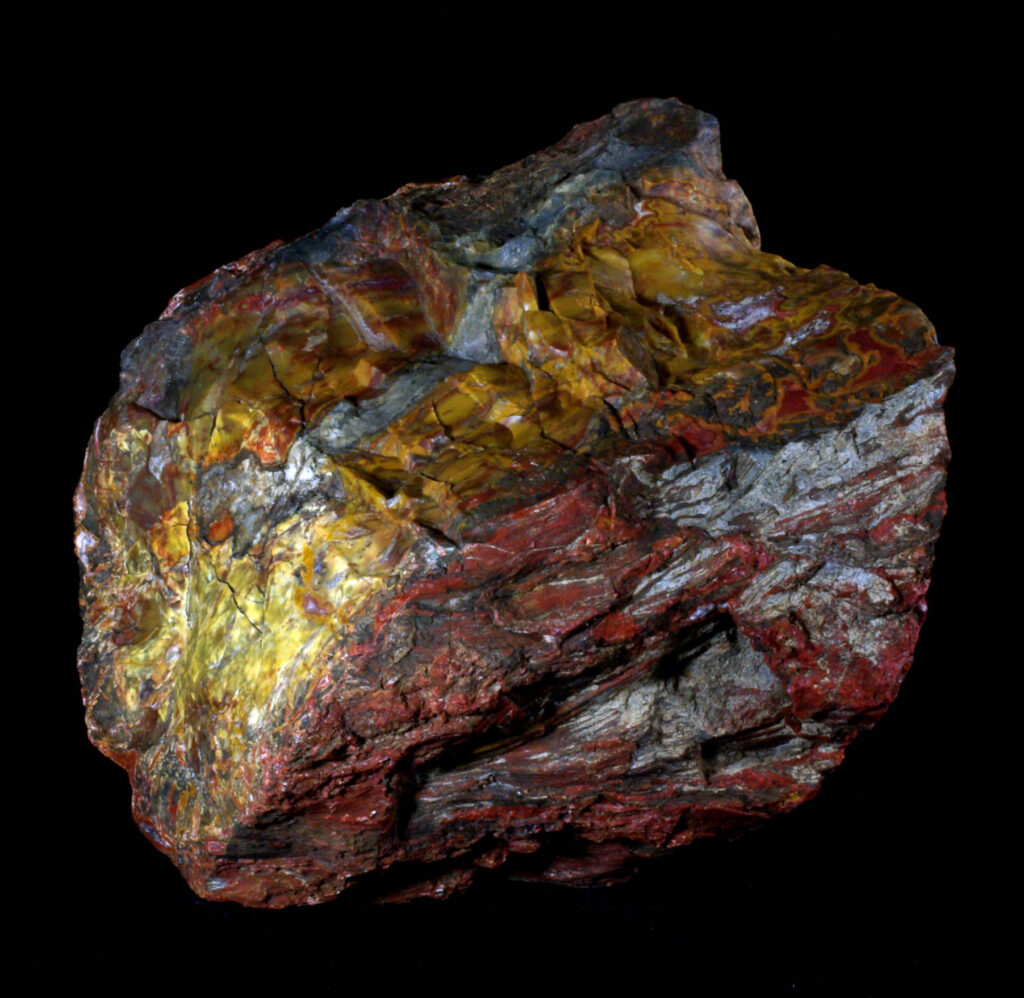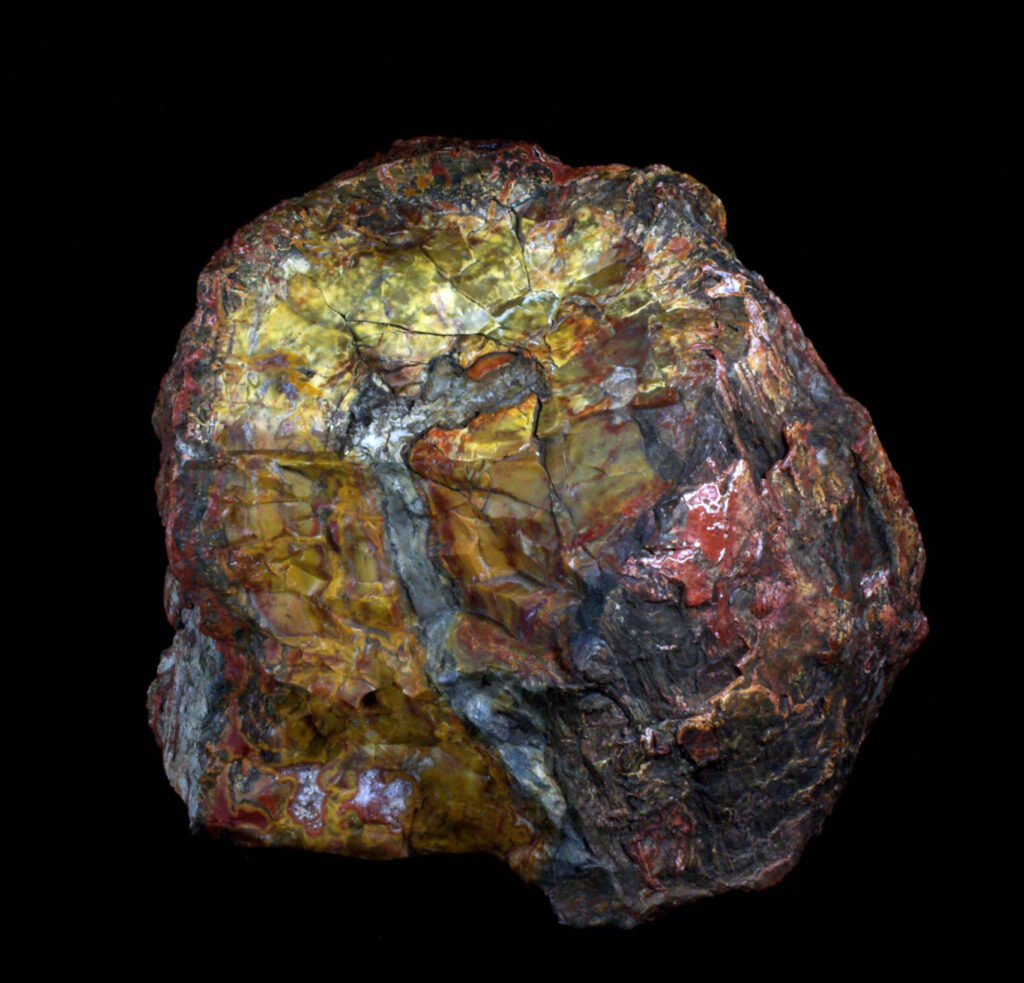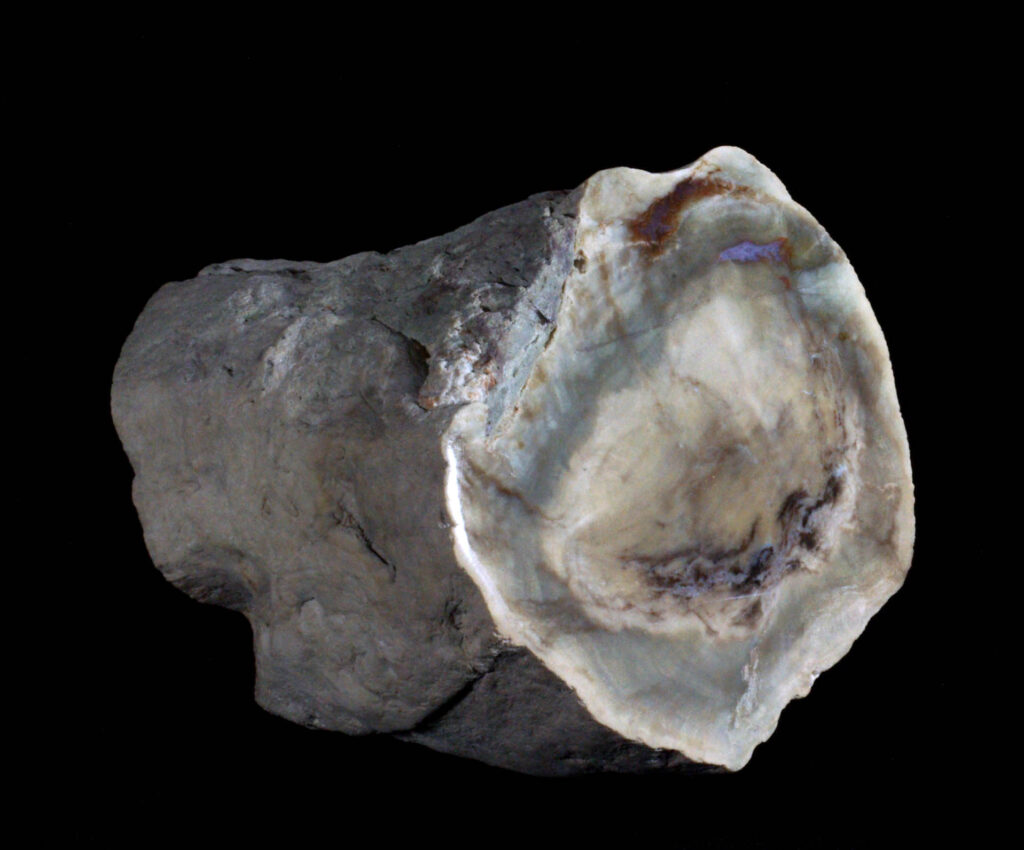








105. Desert Sentinel. Jurassic; Morrison formation. Sculpted by the Universe and its forces in either what we now call the Henry Mountains or Grand County, Utah – home of Yellow Cat. The locations share similar coloring and mineralization. It’s easy to see that it was surface collected and which end was up for all those millennia while it basked in what the Cosmos had to throw its way. Abundant surface character. A work of art. Full round log, as found, neither cut nor polished. Banks Collection. Amazing specimen. It would fit in a box of about 17 by 19 by 15 cm; weight is fifteen pounds. SOLD





106. Woodworthia. Henry Mountains area. Triassic; Chinle formation. Colorful for Chinle wood with excellent external spine dimples. Cut on both ends and polished on one. Rare quality. Ancient Forests on page 276. 4 by 14 cm polished crescent-moon-shaped face; 7 cm tall; two pounds and seven ounces. $900



107. Circle Cliffs. Triassic; Chinle formation. Lovely, subdued alabaster-like coloring. Cut on both ends and polished on one. Ancient Forests on page 276. 9 by 9.5 cm polished face; 9.5 cm tall; three pounds. $400





108. Nephi. Oligocene palm root ball. Likely Palmoxylon hebberttii. Half the root ball, cut and polished on the large face. Astoundingly rare and impossibly perfect. Dr. William Tidwell of Brigham Young University and Dr. E. M. V. Nambudiri of Nipissing University co-authored an excellent article about the Nephi location in the Canadian Journal of Botany which was published in 1998. The focus of the article was the petrified palm wood from the Nephi area. The authors noted with some apparent consternation that their analysis of the palm wood from the location was especially “significant because virtually all fossil palm remains at this locality have now been removed by amateur collectors. Thus, because of the lack of opportunity for further collecting, not only is this the first, but may well be the only species of Palmoxylon to be described from this site.” Drs. Tidwell and Nambudiri had twenty-four specimens to use in their analysis. They determined that all twenty-four were of the same species and that this was a previously unknown species of palm which they named Palmoxylon hebberttii. They determined the geologic strata to be the Sage Valley Limestone Member of the Goldens Ranch Formation which they estimate to be no older than Lower Oligocene in age, making the wood approximately 33 million years old. I find it interesting that this is about the same age as the fossil palm wood from Louisiana. I cannot say with certainty that this palm species is the same as that analyzed in the article. I’ve seen and owned several beautiful palm specimens from this location, but this is the only Nephi root ball I know of. Note the roots. 29 by 22 cm polished face; 12 cm thick; twenty-one pounds and ten ounces. $5000
